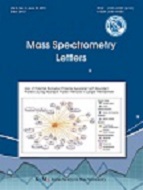
- P-ISSN 2233-4203
- E-ISSN 2093-8950

Meldonium is a drug for treating ischemia by expanding the arteries but it can also enhance the performance of sports players. The World Anti-Doping Agency (WADA) has included it in the list of prohibited substances since 2016. Meldonium is one of the challenging substances for anti-doping testing because it is difficult to recover by general liquid-liquid or solid phase extraction due to its permanent charge and high polarity. Therefore, high-performance liquid chromatography (HPLC) is currently used by injecting a diluted urine sample (known as the “dilute-and-shoot” strategy). There is no loss of target compounds in the extraction/cleanup procedure but its high matrix effect could interfere in their separation or detection from the endogenous urinary compounds. We report a single method using high-resolution mass spectrometry that can be used for both screening and confirmation, which follows the “dilute-and-shoot” strategy. In this method, the endogenous compounds’ interfering peaks in the mass spectrum are separated at a high resolution of FWHM 140,000, and the results are suitable for substance detection following the WADA guidelines. The interferences in the obtained mass spectrum of the urine matrix are identified as acetylcholine, lysine, and glutamine by further analysis and database searching. Validation of the method is performed in routine anti-doping testing, and the limit of detection is 50 ng/mL. This method uses simple sample preparation and a general reverse phase HPLC column, and it can be easily applied to other substances.
S. Aronovich. World Patent No. 80/01068.
Simkhovich, B. Z. (1988). . Biochem. Pharmacol, 37, 195-202.
Dambrova, M. (2002). . Trends Cardiovasc. Med, 12, 275-279.
Dambrova, M. (2016). . Pharmacol. Res, 113, 771-780.
Lippi, G. (2017). . J. Sport Health Sci, 6, 49-51.
WADA. (2017). WADA Technical Document. .
Pidpruzhnykov, Y. V. (2012). . Biomed. Chromatogr, 26, 599-605.
Peng, Y. (2010). . J. Chromatogr. B, 878, 551-556.
Cai, L. J. (2011). . Chromatographia, 73, 659-665.
Šlampová, A. (2016). . J. Chromatogr. A, 1468, 236-240.
Tretzel, L. (2016). . Int. J. Sports Med, 37, 500-502.
Lv, Y. F. (2007). . J. Chromatogr. B, 852, 35-39.
Görgens, C. (2015). . Drug Test. Anal, 7, 973-979.
김기훈. (2016). Analysis of Glycerol with Isolation of Endogenous Interferences using “Dilute and Shoot” Strategy and High-Resolution Mass Spectrometry in Human Urine for Antidoping Testing. Mass Spectrometry Letters, 7(4), 111-115. http://dx.doi.org/10.5478/MSL.2016.7.4.000.
Dunphy, R. (2003). . J. Pharm. Biomed. Anal, 31, 905-915.